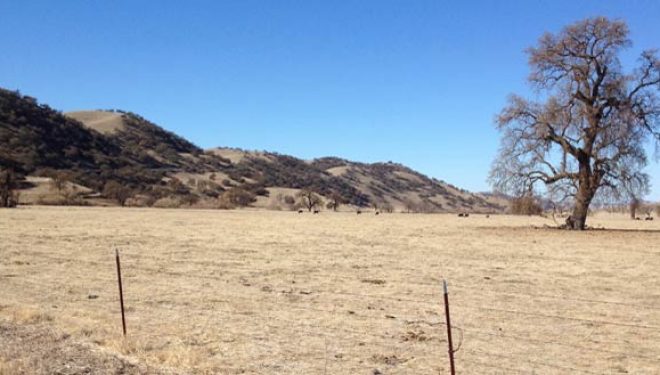
By Heraclio Pimentel and Rebecca Andrews
The U.S. Supreme Court recently held that a party may seek contribution under Subsection 113(f)(3)(B) of the Comprehensive Environmental Response, Compensation, and Liability Act of 1980 (CERCLA) only after settling a CERCLA-specific liability. The Court’s holding reverses the U.S. Court of Appeals for the District of Columbia Circuit’s earlier ruling that the Territory of Guam’s (Guam) settlement of alleged federal Clean Water Act (CWA) violations triggered the statute of limitations on Guam’s ability to seek contribution against the United States under CERCLA subsection 113(f)(3)(B). [Territory of Guam v. United States, ___U.S.___, 141 S.Ct. 1608 (2021).]
Factual and Procedural Background
In 2004, Guam and the U.S. Environmental Protection Agency (EPA) entered into a consent decree regarding the Ordot Dump (Site) after the EPA sued Guam for alleged violations of the CWA. The site had originally been constructed by the United States Navy, who had deposited toxic military waste at the site for decades prior to ceding control of it to Guam. Guam’s compliance with the consent decree, which included a civil penalty, would constitute full settlement and satisfaction of the claims against it under the CWA.
Thirteen years later, Guam sued the United States under CERCLA for its earlier use of the site, alleging the United States was liable under CERCLA §§ 107(a) and 113(f)(3)(B). Section 107(a) allows a state, including a territory, to recover:
. . .all costs of [a] removal or remedial action’ from ‘any person who at the time of disposal of any hazardous substance owned or operated any facility at which such hazardous substances were disposed of.
Section 113(f)(3)(B) provides that a:
. . .person who has resolved its liability to the United States . . . for some or all of a response action or for some or all of the costs of such action in [a] settlement may seek contribution from any person who is not [already] party to a [qualifying] settlement.
Actions for contribution under Section 113(f)(3)(B) are subject to a three year statute of limitations.
On appeal, the D.C. Circuit determined that Guam could not bring an action under Section 107(a) because it could have brought a contribution claim under § 113(f) as a result of settling its CWA liability in the 2004 consent decree. However, because the three-year statute of limitations had expired, Guam could no longer proceed with its contribution action either. The Supreme Court granted Guam’s petition for writ of certiorari.
The U.S. Supreme Court’s Decision
Guam presented two arguments challenging the D.C. Circuit’s decision, however the Court only needed to address Guam’s first argument to resolve the issue. In its first argument, Guam contended that it never had a viable contribution claim under § 113(f) because this section only applies when a settlement resolves liability under CERCLA, and it should therefore be able to pursue a recovery action under § 107(a). The Supreme Court agreed, holding that a settlement must resolve a CERCLA liability to trigger a contribution action under Subsection 113(f)(3)(B).
The Supreme Court’s analysis focused on the totality of § 113(f), which, the Court explained, governs the scope of a contribution claim under CERCLA. Reading § 113(f) as a whole, the Court determined that the provision is concerned only with distribution of CERCLA liability. The Court reasoned that because a contribution suit is a tool for apportioning the burdens of common liability among responsible parties, the most obvious place to look for the threshold liability in this case was CERCLA. The Court noted that this approach was consistent with the principle that a federal contribution action is almost always a creature of a specific statutory regime.
According to the Court, this interpretation is confirmed by the language of Subsection 113(f)(3)(B), which provides a right to contribution in the specific circumstance where a person has resolved liability through settlement. This right to contribution, the Court stated, exists within the specific context more broadly outlined in § 113(f). Further, the Court explained that a predicate CERCLA liability is apparent in § 113(f) when its provisions are read in sequence as integral parts of a whole. The Court pointed out that Subsection 113(f)(1), the “anchor provision,” is clear that contribution is allowed during or following any civil action under CERCLA §§ 106 or 107. The Court concluded that the context and phrasing of Subsections 113(f)(2) and (3) also presume that the right to contribution is triggered by CERCLA liability, and that these provisions are best understood only by reference to the CERCLA regime, including Subsection 113(f)(1). On this point, the Court noted that Subsection 113(f)(3)(B) ties itself to Subsection 113(f)(2), which in turn mirrors Subsection (f)(1)’s anchor provision requiring a predicate CERCLA liability. The Court further noted that Subsection 113(f)(3)(B) used the term “response action,” which is used in several places throughout CERCLA.
Remedial Actions under CERCLA are Not the Same as Remedial Actions under the Clean Water Act
Addressing the United States arguments, the Court opined that while remedial measures taken under another environmental statute might resemble action taken in a formal CERCLA response action, applying Subsection 113(f)(3)(B) to settlement of environmental liability that might have been actionable under CERCLA would stretch the statute beyond its statutory language. The Court was similarly unpersuaded by United States’ argument that there was a lack of express demand of a predicate CERCLA action in Subsection 113(f)(3)(B), focusing instead on Subsection 113(f)(3)(B)’s use of the phrase “response action,” an express cross-reference to another CERCLA provision, and placement in the statutory scheme. Finally, the Court dismissed the United States argument that interpreting Subsection 113(f)(3)(B)’s as only allowing a party to seek contribution after settling a CERCLA liability would be redundant in light of Subsection 113(f)(1). To this, the Court stated that it was interpreting Subsection 113(f)(3)(B) according to its text and place within a comprehensive statutory scheme rather than trying “to avoid surplusage at all costs.” The Court thus held that the “most natural” reading of Subsection 113(f)(3)(B) is that a party may seek contribution under CERCLA only after settling a CERCLA-specific liability.
Conclusion and Implications
The importance of the Court’s opinion to parties who may seek cost recovery or contribution from other responsible parties under CERCLA after entering a settlement agreement to discharge potential environmental liability under federal law cannot be understated. In particular, as the Court points out in the final footnote of the opinion, this case has the added benefit of providing clarity as to the application of the three-year statute of limitations for contribution actions under Subsection 113(f)(3)(B). Beyond this specific holding, the Court’s view of contribution provisions in general is useful precedent for courts and interested parties in interpreting contribution provisions in other statutes. The Supreme Court’s opinion is available online at:
https://www.supremecourt.gov/opinions/20pdf/20-382_869d.pdf




